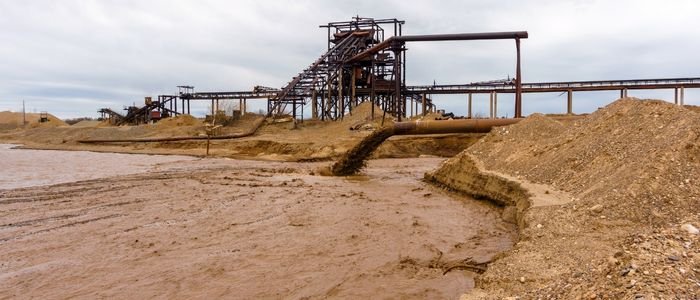Pumps are used on construction sites. Pumps are classified as centrifugal or positive displacement. They are designed to move water from one location to another continuously.
Since slurries are heavy and hard to pump, pumps made for them will be stronger than those made for liquids with less viscosity.
Most of the time, slurry pumps are bigger, more powerful, and have shafts and bearings that last longer than other pumps. The centrifugal pump is the most prevalent kind of slurry pump.
These pumps can convey the slurry via a revolving impeller in a manner similar to how a liquid that resembles water would flow through a typical centrifugal pump. Thus, it is used to transfer slurry in industrial applications
This post will give you some input about slurry pumps for the engineering industry. So, stay connected and keep on reading.
What are the Best Slurry Pumps for Engineering Industry?
Select the best slurry pump for your application. Almost all industries use slurry pumps, which are essential to several processes. Five critical things to think about when choosing a slurry pump are its design, its materials, how it’s used, its seal, and how much power it needs.
The 5 things you need for the best slurry pump
Slurry Pump Design
In designing a pump, consider the abrasive and often corrosive properties of the slurry. Also, sludge and slurry can have significant, unexpected solids that always get stuck in pumps.
The slurry’s abrasive and occasionally corrosive quality will quickly wear out the volute and damage the tolerance, as most centrifugal pumps have an impeller with close tolerance to the volute.
As a result, the pump’s suction capacity is reduced. Because of this, slurry pumps have a lot of downtime and need expensive maintenance and replacement parts.
The kingda Pump is, therefore, perfect for slurry pumping applications. The kingda Pump has a rotor rather than an impeller and thus lacks crucial tolerances.
This enables it to pump materials up to 12 inches thick and slurry at 30%. Centrifugal pumps cannot tolerate this pressure without experiencing failure or requiring the replacement of worn parts.
Slurry Pump Building Materials
Choosing a suitable material is another vital step in selecting the best pump for your slurry. Hi-Chrome is the best building material when the slurry is very rough and has a pH of 7.
This metal has the highest Brinell hardness of any metal that can handle how rough the slurry is. This material has a high Brinell level and is the best for slurry pumps that can handle acidic substances.

Slurry Pump Deployment Method
Learning how to use a slurry pump is a key part of figuring out the best way to set things up. There are three main ways to use slurry pumps: submersible pumps, flooded suction pumps, and self-priming pumps.
Seal for Slurry Pump
- Choosing the right seal is very important because the slurry is so rough. The faces of a slurry pump seal should be made of silicon carbide or tungsten carbide and be hardened.
The seal technology unique to Kingda Pump uses a self-contained seal-flushing system and a dual mechanical seal setup. This keeps the seal faces from getting too hot, so the slurry can’t make the seal too hot and crack the surfaces.
Power Slurry Pump Sizing
It’s essential to figure out the right size and power requirements for your slurry pump. Because slurries are rough, it’s important to choose a pump size that lets the pump work at a slow enough speed to make the pump last longer.
Between 900 and 1200 RPM should be used with slurry pumps. When you exceed this speed, the wear spots on the slurry pump are sandblasted, causing the pump to last significantly less time.
When pumping slurries, equipment often breaks down or gets clogged. The designer’s job is to look at all the factors of each situation, such as the client’s and the site’s preferences, to come up with a system and choose a pump that is strong enough to prevent clogs, easy enough for operators to maintain, and safe for workers to use.
The slurry pump system is one of your washplant’s most crucial parts. “Many conventional pumps are good for transferring rainwater or cleaning floodwater, but life isn’t so easy for slurry pumps.”
Good slurry pump manufacturers must take a variety of elements into account when designing and specifying their products. If you know these, you can choose the best pump to move sludge from a quarry.
Solids like sand or other minerals are often carried in sludge from quarries or wash plants. The particle sizes and types of these solids are often unknown. Some of these are rough and can quickly wear down important parts, shortening the pump’s life, lowering its performance, or even causing it to break down and cost a lot to fix.
- Horizontal pumps are the most popular option for quarries and other locations with bulk slurry handling demands because they work best when flow and head performance are most crucial. In contrast, vertical pumps are suitable where they need to sit over a sump.
- A peristaltic pump is another kind of pump that can be used to move slurry in some situations. Industrial peristaltic pumps are great for corrosive or hard-to-clean slurry because the fluid doesn’t touch the pump’s mechanics.
- With a split-case pump, it is easy and cheap to replace worn parts without having to replace the whole pump.
The Following Essential Features When Purchasing a Slurry Pump
- How long will the materials last? High-quality slurry pumps have internal linings made of high-chrome metals and specially-made rubbers, and they are made with parts that are resistant to wear.
- Maintenance is simple. Wearing parts must be easy to get to so they can be checked and, if needed, With a split-case pump, it is easy and cheap to replace worn parts without having to replace the whole pump. Getting the right amount of lubrication is necessary to make sure that mechanical parts will last, be safe, and work well. Keeping the right amount of grease on mechanical parts is necessary to ensure they last, are safe and work well with automatic lubrication systems, saving time and ensuring accuracy in this process.

- Pump size and power. The volume and transfer distance play a significant role in this. Many slurry pumps have a flatter head curve so thicker solutions can be moved through the whole length of the output pipe.
- Energy usage and reliable capacity must be balanced more than before. Going cheap increases the likelihood of repurchasing or repairing too soon, but over-specifying can result in considerable profit, income losses, and excessive climate effects. Contact Kingda Pumps if you need help figuring out how much power you need for your specific flow and head needs.
- Service and part availability. Keep an eye out for pump units that can be opened up to reach the regions suffering from wear and tear, and always check the brand’s part availability/service requirements.
What are the Features of Slurry Pumps for the Engineering Industry?
When pumping slurries, several problems and problems can happen, but if you use the proper engineering and equipment, you can work for a long time without worrying. When choosing a slurry pump, working with a trained engineer is essential because the wrong slurries can damage the pump.
Leveling (on/off control devices), self-priming, and thermal overload protection are features of slurry pumps. Some models are non-clog, plug-in, reversible, and can run dry. enough of a vacuum on their own to pull fluid into the input without any help. Self-priming slurry pumps make enough of a vacuum to draw fluid into the information without help.
Non-clog slurry pumps are made to pump materials that would clog other industrial pumps, such as sticky or stingy compounds. Top suction devices can draw fluid from a tank’s top rather than the reservoir’s bottom. The slurry is intended to be pumped through the pump vertically using a stator and rotor assembly that stands up straight.
Slurry pumps are typically built of cast iron, aluminum, brass or, bronze, polyethylene, stainless steel, or plastic. These same materials are also used to make pump impellers, diaphragms, bladders, and other parts.
Other options are polytetrafluoroethylene (PTFE), which has a high chemical resistance and a low coefficient of friction, and ethylene propylene (EPDM). This plastic offers good resistance to sunlight, weathering, and ozone. Other slurry pumps are made of specialized or exclusive materials.
What is Engineers’ Advice for Using a Slurry Pump?
Engineers’ advice is to display all manufacturers of slurry pumps.
Slurry pumps create flow by increasing the pressure. Maximum discharge flow, maximum discharge pressure, horsepower and brake horsepower, rotations per minute (RPM) of the motor/pump rotating assembly, and media temperature are among the operating specifications.
Inlet size, discharge size, reservoir or tank size, and the number of pumps in the community are all configuration parameters. Slurry pumps vary depending on the product application, power source, and pump features.

When choosing slurry pumps, the power supply is a critical specification. Alternating current (AC), direct current (DC), hydraulic, and air-driven or pneumatic are available options. Slurry pumps run on steam, natural gas, water, an internal combustion engine, or both. Manual slurry pumps are powered by hand or foot.
Slurry pumps are built effectively. Slurry pumps operate on a more straightforward premise than other pumps. The slurry enters the pump through the revolving impeller, which generates a circular motion. The slurry is forced outward by centrifugal force and travels between the impeller’s blades.
Any solid could be transported by water. But the size and shape of the particles may be a limiting factor depending on whether or not they can move through the pump tubes without getting stuck. There are four main categories under the general category of slurry pumps that can assist you in choosing a type of slurry pump that suits your needs and your company’s standards.
Type 1:
Mildly cutting
Type 2:
A little Bit Abrasive
Type 3:
Extremely More Abrasive
Type 4:
Extremely abrasive
The best way to move Type 4 slurries, which are very rough, is with oil sand pumps. Slurry pumps have an advantage because they can handle large amounts of slurry and can stand up to more pressure. They are specially made to hydro transport large-particle materials and guarantee improved wear resistance in challenging environments.
If you’re looking for information about slurry pumps for the engineering industry. Please contact our professional slurry pumps and engineers.


